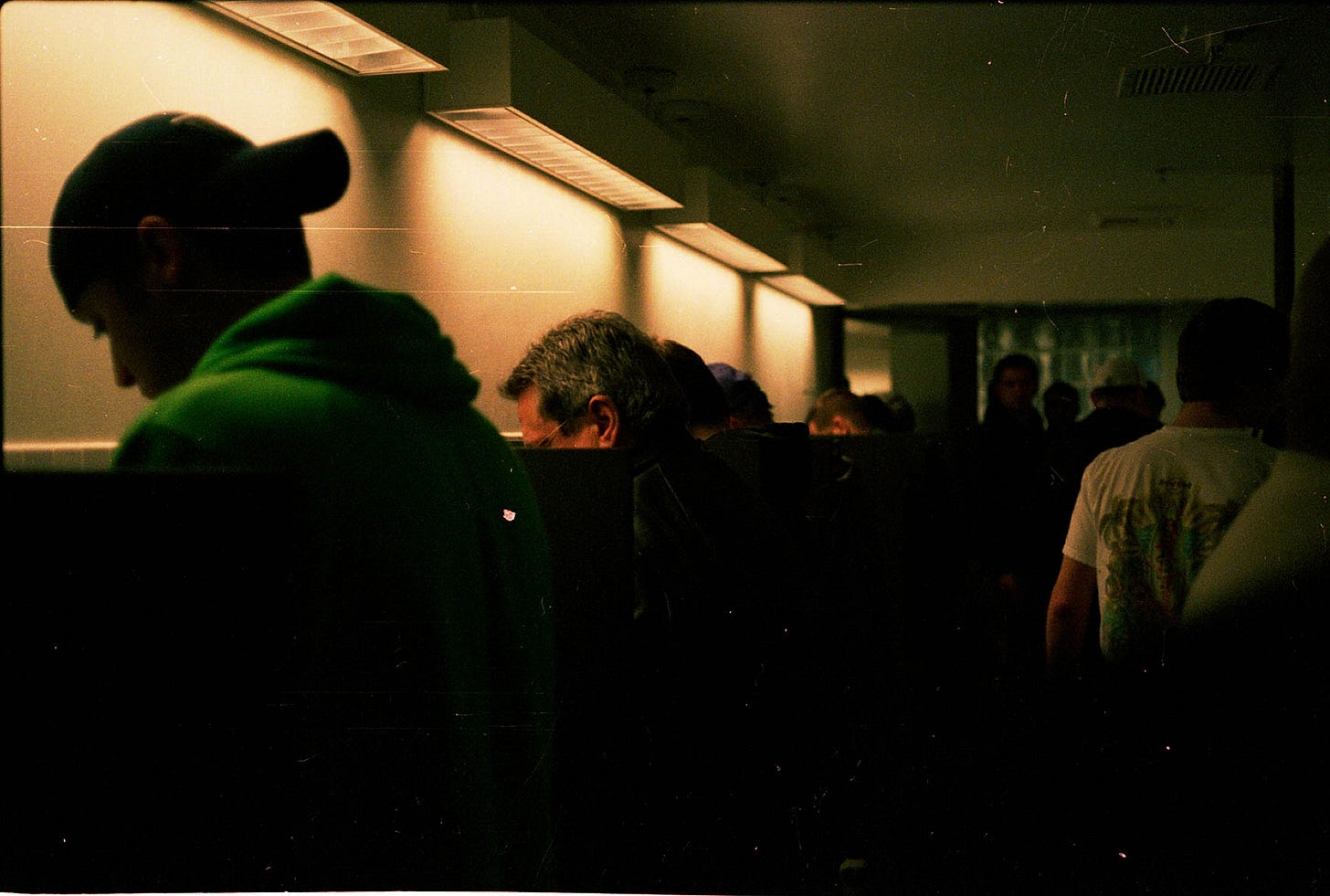On Obsolescence
WTF is FOBOAMO?

Why, dear reader, am I sharing this technological dilemma with you? Because this is a story about obsolescence, which is lowkey the theme of this book project, and an extended metaphor for many stories to come. I am compiling photos from obsolete film cameras which I’m prying from obsolete software on my almost-obsolete laptop. Photos of spaces in the city rendered obsolete by market-driven forces, by now replaced by the shiny new, the future obsolete.

Obsolete is a weird word. Some use it interchangeably with outdated or unfashionable but I think obsolete is harsher and carries the weight of a final judgment. Outdated means you’re behind the times. Obsolete means you got fucked by the future. The symptoms for both afflictions look similar, but one is curable if treated, the other is terminal.
I won’t mansplain obsolete’s etymology but here’s a link if you like. The word implies utility and time: a description for something once useful in the past and is less useful now. Something at the end of its market life cycle, use-value diminished and exchange-value deflated, optimally replaced—the sooner, the better.
Who decides what’s useful, valuable and optimal? We all do, collectively. But alas, our voices are not weighted equally in this collective. Some are louder, richer, and have more to gain by speeding up the replacement process. The market chases infinite growth, the half-life of goods and technology decreases. Same goes for places, people, culture and ideas—all consumed/experienced, digested, and finally shat out to make room for the replacement.
For all the attention FOMO gets, FOBO—Fear of Becoming Obsolete—is equally real, if not realer. FOMO is what you get when folks are at a party and you’re not there to experience it. FOBO is the feeling that the whole world is moving on without you. One is focused on the fear of a missed gain, the other on fear of a total loss. Distilled, consumption drives the former, survival drives the latter. Also, they’re not mutually exclusive. I get a hint of FOBOAMO when I see an NFT sold for 3 ETH while I’m out here scanning film negatives.
Whatever the case, fear drives both and I’m not here for either. Everywhere an exponential growth curve marches through, an exponential decay curve is left in its wake. Brownouts, frequent rolling power-outages familiar to Philippine folk, result from an obsolete energy system. And yet the people at its mercy adapt, resist, create. Foreigners freak out when they experience it while the natives go about their business. Kids grow up with fond memories of playing in the dark, oblivious to obsolescence.
The parameters of what is useful, valuable and optimal are different in spaces like this. The half-life is negotiable. Goods discarded as obsolete in the market get remixed by people resisting obsoletion by society. It’s the story of Jeepneys, of hip-hop, of your favorite dish, of early meme culture. We breathe value back into what others see as no longer useful. When they come back (they always come back) to swipe that value, some of us defend our trash, some move on to other scraps.
Back to the book. Since these are digitized film photos, the metadata won’t help with the sorting. This process necessitates revisiting each photo one-at-a-time, which I think will be a good thing. Photos that were wack to me before are dope now, like the three I posted here. New me breathing use-value into things that the old me found useless. Over the duration of this newsletter, fellow travelers, we shall navigate all the obsolescences together.
Coming soon: the idea and backstory of this book project, some drafts, some photos, more playlists, maybe some rap songs in progress, and a cameo from Professor Rod.




